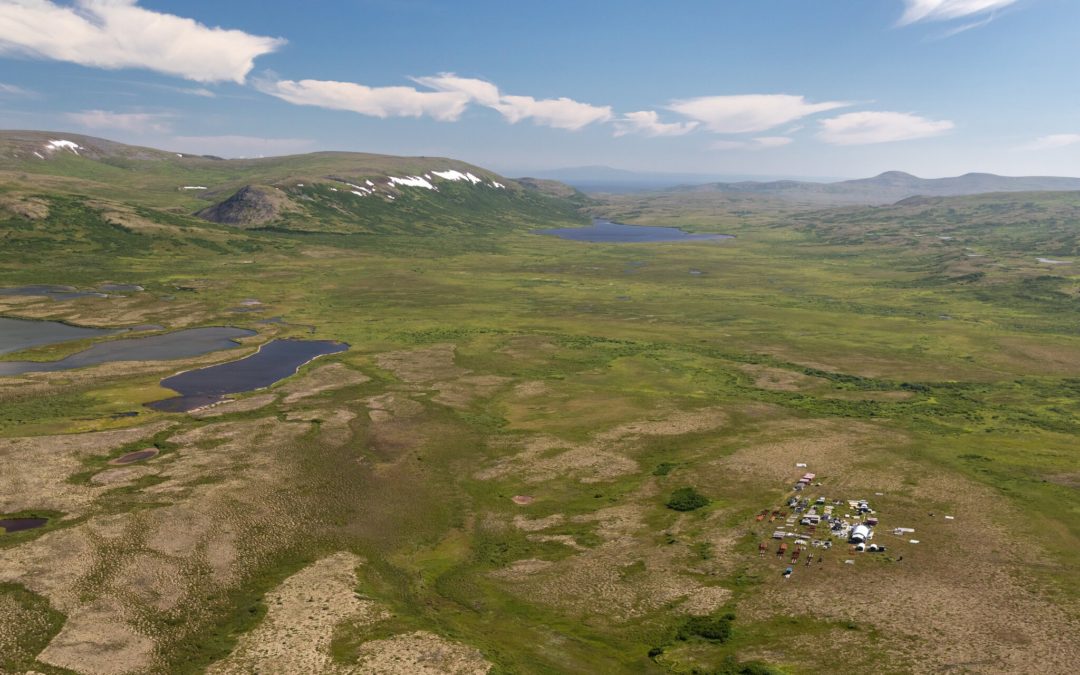SOURCE: New York Times
DATE: July 24, 2020
SNIP: From the air it looks like just another tract of Alaska’s endless, roadless tundra, pockmarked with lakes and ponds, with a scattering of some of the state’s craggy mountains.
But this swath of land, home to foraging bears and spawning salmon about 200 miles southwest of Anchorage, has been a battleground for years.
From the air it looks like just another tract of Alaska’s endless, roadless tundra, pockmarked with lakes and ponds, with a scattering of some of the state’s craggy mountains.
But this swath of land, home to foraging bears and spawning salmon about 200 miles southwest of Anchorage, has been a battleground for years.
[O]pposition [to the Pebble Mine] has long been widespread, both in the region and statewide, with concerns about environmental damage and the potential for harming another critical resource: salmon. The fish is the main traditional subsistence food for many of the Native Alaskans in the region and the basis of both a thriving sport-fishing industry and, in nearby Bristol Bay, one of the largest commercial wild salmon fisheries in the world.
The mine will be located in two watersheds that feed fish-spawning rivers. Opponents say tailings left from the mining operation pose risks if heavy metals or other contaminants from them leach into groundwater or if dams holding back the tailings fail in an earthquake.
The deposit was discovered in the late 1980s, and planning for a mine began in earnest about 15 years ago. It drew opposition from leaders in both parties from the start, as battle lines between mining and fishing were established. But the project was aided by the pro-mining stance of the governor at the time, Sarah Palin.
Under President Barack Obama, the project was blocked in 2014 by the Environmental Protection Agency, largely over concerns about the risks to salmon.
But the Pebble Mine gained new momentum under President Trump’s more industry-friendly policies. While at first continuing its criticism of the project, the Environmental Protection Agency eventually reversed the Obama-era decision blocking it.
On Friday, the Army Corps of Engineers issued a final environmental impact statement, or E.I.S., for the project. Under normal operations, the Corps wrote, the project would not result in “long-term changes in the health of the commercial fisheries in Bristol Bay.”
In addition to the open-pit mine, the plan would include large dammed ponds for the tailings, some of them toxic, that result from mining and concentrating the metals, 80 miles of road and pipeline to carry the concentrate to a new port on Cook Inlet, and a 165-mile natural gas pipeline for a generating plant to power the operation.
In an interview this week, Mr. Collier described the release of the final impact statement as “the most significant day in the 15-odd-year history of the Pebble project.”
Alaska is the most seismically active state in the nation, and critics said the Corps of Engineers had not taken sufficient account of the risk of earthquakes or volcanic activity, and that its analysis of the dam designs was inadequate. Some of the dams would be hundreds of feet high.
Tailing dam failures can unleash a sudden flood of contaminated slurry with disastrous effects. A 2019 failure at an iron mine in Brazil, for example, killed more than 250 people. Given the Pebble Mine’s remote location, the risk to people might be low, but the heavy metals and other contaminants could make nearby rivers toxic to fish.
In a month or perhaps longer, the Corps will make a final decision on whether to allow the project to proceed. Approval is expected.
The project will require more permits, mostly from the state, which could take three years to obtain. And should President Trump lose re-election, a Democratic administration could move to block the project once again.

